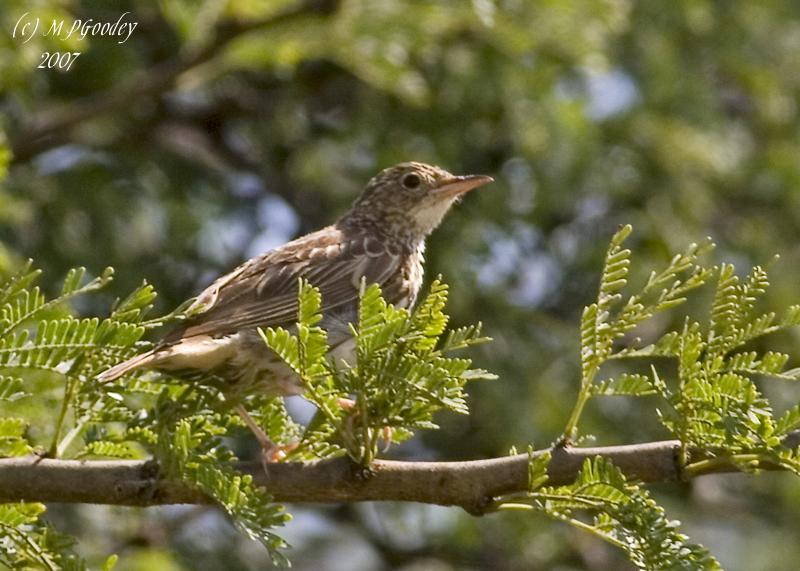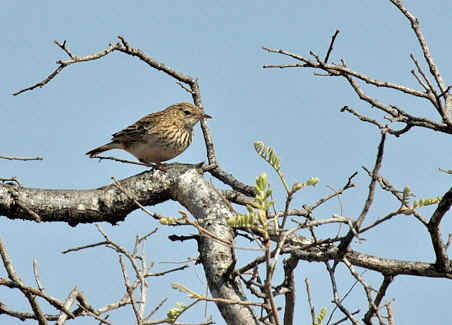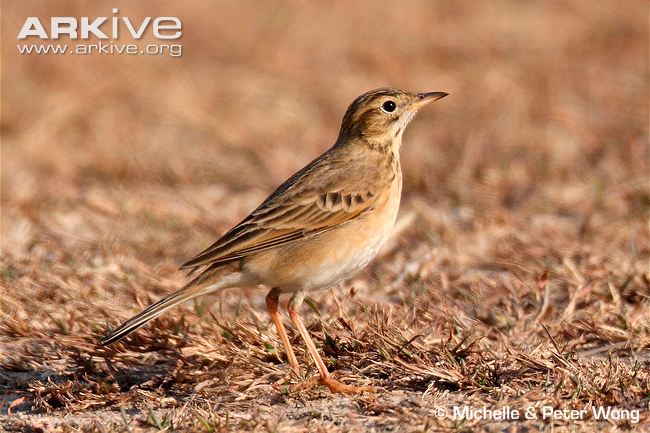
Anthus caffer
TAXONOMY
Anthus caffer Sundevall, 1850, Natal, South Africa. Five subspecies.
OTHER COMMON NAMES
English: Bushveld pipit; French: Pipit cafre; German: Buschpieper;
Spanish: Bisbita Negra.
PHYSICAL CHARACTERISTICS
4.9–5.5 in (12.5–14 cm); 0.6 oz (16 g). Buff underparts streaked
with brown at the throat and breast. Dark brownish head and
upperparts with lighter eyestripe and chin.
DISTRIBUTION
A. c. caffer: Southeast Botswana, southwest Zimbabwe, northern
South Africa and west Swaziland; A. c. traylori: South Mozambique
and adjacent northeast South Africa; A. c. mzimbaensis:
northeast Botswana, central Zimbabwe, northern Zambia, extreme
southeast Democratic Republic of the Congo (DRC)
and western Malawi; A. c. blaneyi: Kenya and Tanzania; A. c.
australoabyssinicus: Ethiopia.
HABITAT
Open woodland with patchy ground cover, woodland edges,
and grassland with scattered trees.
BEHAVIOR
Occurs in pairs or small flocks, often with mixed-species bird
parties. Flies to trees when disturbed. Some A. c. mzimbaensis
undertake post-breeding movements from Botswana and Zimbabwe
north to Zambia, DRC, and Malawi.
FEEDING ECOLOGY AND DIET
Forages for insects on the ground in grass and leaf-litter.
REPRODUCTIVE BIOLOGY
Monogamous. Breeds October through April, during rains.
Nest is a thick-walled cup of grass, lined rootlets, on ground
under tuft of grass. Lays two to three eggs.
CONSERVATION STATUS
Not threatened.
SIGNIFICANCE TO HUMANS
None known.
Other popular Animals
Photo Gallery of - Bush pipit




 Animalia Life
Animalia Life